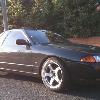Hydraulic Handbrake Setup
Announcements
-
Similar Content
-
Latest Posts
-
Not sure the US can import anything other than the C34 Stagea's, but if you can and you need to to tow, DO NOT under any circumstances get an M35 Stagea. If it is just as a family car and your country/state allows it, absolutely and definitely get an M35 (3.5L if possible as it is effectively a 350Z) over a C34.
-
Punch your VIN (nm35-xxxxxx) into Amayama.com You can see everything there quite easily.
-
Thanks for that, I'll check it all out. I can always do the brakes last anyway if its a problem. The 16's are super cool, if they do fit I'll cruise around with them for a bit.
-
Well, that's kinda the point. The calipers might interfere with the inside of the barrels 16" rims are only about 14" inside the barrels, which is ~350mm, and 334mm rotors only leave about 8mm outboard for the caliper before you get to 350, And.... that;s not gunna be enough. If the rims have a larger ID than that, you might sneak it in. I'd be putting a measuring stick inside the wheel and eyeballing the extra required for the caliper outboard of the rotor before committing to bolting it all on.
-
OK, so again it has been a bit of a break but it was around researching what had been done since I didn't have access to Neil's records and not everything is obvious without pulling stuff apart. Happily the guy who assembled the engine had kept reasonable records, so we now know the final spec is: Bottom end: Standard block and crank Ross 86.5mm forgies, 9:1 compression Spool forged rods Standard main bolts Oil pump Spool billet gears in standard housing Aeroflow extended and baffled sump Head Freshly rebuilt standard head with new 80lb valve springs Mild porting/port match Head oil feed restrictor VCT disabled Tighe 805C reground cams (255 duration, 8.93 lift) Adjustable cam gears on inlet/exhaust Standard head bolts, gasket not confirmed but assumed MLS External 555cc Nismo injectors Z32 AFM Bosch 023 Intank fuel pump Garret 2871 (factory housings and manifold) Hypertune FFP plenum with standard throttle Time to book in a trip to Unigroup
-







Recommended Posts
Create an account or sign in to comment
You need to be a member in order to leave a comment
Create an account
Sign up for a new account in our community. It's easy!
Register a new accountSign in
Already have an account? Sign in here.
Sign In Now